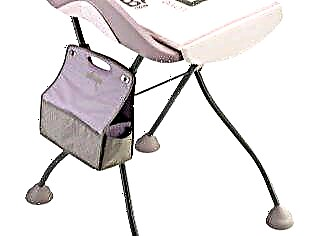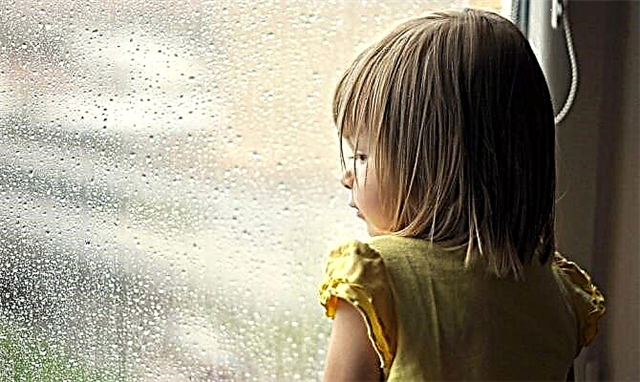
When a baby is born in a family, the mother tries to provide him with the most comfortable conditions and protection. One useful device for caring for newborns is the changing board. This product has low soft sides, due to which it prevents the child from rolling in different directions. However, when buying such a product, a number of questions may arise, because each type of such device has its own nuances. What you need to know in order to make the right choice, we will consider in detail below.

Features:
As a tool to facilitate daily infant care, the changing board does not replace a dedicated table or other type of stationary furniture. However, it differs in a prepared type of surface, in the form of which it is much more convenient and faster to swaddle a baby on it than to do it on a regular table or bed. Distinctive features of this device from analogs of a stationary type are the following:
- mobility;
- light weight;
- compact size;
- acceptable cost.
Unlike changing tables, such products do not constrain the area even in small apartments or private houses. Some varieties are mobile to such an extent that such pads can be taken with you on a trip or even on a visit if necessary. Such devices are distinguished by the safety of the baby. They prevent him from falling from the height at which the changing board is currently located, even with awkward manipulations. As a rule, the surface of the product is made of non-slip material in order to prevent the child from slipping.
Depending on the variety, it can be installed on a bed, table, in a cot or even a chest of drawers. It does not replace the changing table, as it does not have drawers, drawers, linen compartments and baby care products. This is nothing more than a plane on which you can swaddle, cleanse the baby's skin, and in some cases put the newborn to bed. In some cases, mothers are especially careful with the choice of changing boards. They are initially going to use them as tables to massage and charge babies.
Varieties
The classic version of the changing board is a product with an optimally rigid base, a flat central part and small fences. The sides are located at an angle in relation to the working surface. This option is used at home because it does not involve carrying. The fences themselves can vary in shape. For example, they can be made in the form of soft rollers, protecting the working plane not only from two, but even three sides, which helps protect the baby from falling when he is pushed by the legs from the base.
In addition to the rounded shape, they are triangular and even flat, differing in width in different corners of the structure, they are along the entire length of the face or mostly at the head. In some models, this is reflected in the internal space, but the safety of such boards is much greater.
Manufacturers produce these products in a wide range, which is reflected not only in the color palette and enclosing elements. Products vary in material of manufacture, size and shape. Moreover, they differ according to the place of use. However, all varieties are designed to fit removable cloth diapers, which protects the baby from contact with the cool surface of the board.
Often, the structure can be supplemented with fixing elements, for example, legs with the board fixing on a specific base. This feature allows you to give strength to a simple product and completely secure it for caring for a child. In this case, the possibility of the board sliding off with any movement of the mother or baby is excluded.


In addition to these options, the companies produce models that are closer to traditional changing tables. For example, these products may have higher support heights compared to the conventional range.


Other varieties include designs with wheeled legs or analogs with a removable top part, which can be used as an additional board for changing or hygiene procedures in child care.


Bed options are classic-type products with reliable supports and straps with locks.
Materials
In the production of changing boards, trade marks use different raw materials. More often on sale you can find plastic products that are resistant to various mechanical loads. For substrates, the company uses latex foam that can hold the desired shape for a long time and allow air to pass through. Latex is a hypoallergenic material, because it does not irritate baby skin.
As a top or sheathing layer, manufacturers use materials derived from rubber, which are not only resistant to water. Today it is a fairly durable raw material, which is characterized by resistance to mechanical stress and frequent cleaning. They can have a variety of colors and themes, so choosing a product to match the overall style of the nursery today will not be difficult.
How to choose?
Depending on the type of product and its size, it is bought purposefully, starting from the specific situation of the nursery. For example, in the presence of a children's chest of drawers without a top, they try to take an overlay on the chest of drawers. When there is very little space, they take a changing board for a crib or a stand with a mount on the bed. At the same time, they try to take into account the dimensions of the specific, already available furniture, which is planned to be used for daily care. It is important to understand that these products are not changing tables, since, in addition to the table top, they do not have other elements inherent in such structures.
The choice of board and table has nothing to do. The board is taken separately, but adjusting to the specific measurements of the furniture. Even folding-type wall-mounted options are not, in fact, boards, because they have not only a board, but also a rack for placing the necessary accessories. When buying, you need to pay attention to the type of upholstery material. In addition, it is important that the covering is tight, and the product itself does not have sharp corners.
The working surface should not be soft, because the baby should not fall into it. A rug model is not the best solution, as this option will be inconvenient for changing. You need to take the product that has an optimally rigid base.
Despite a lot of conflicting opinions, do not forget about the formation of the skeleton in the first year of a baby's life. The product should not be soft, because this will increase the daily load on the baby's spine. It is also important to take care of the size, because babies grow very quickly during the first months of life. For example, there is no need to take the 60x58 cm option, when the furniture allows you to place a product with dimensions of 72x72 cm on the surface.With regard to the options for the bed, it is worth noting: they are the right solution if there are no other ways. This is far from the most convenient solution, especially in cases where the bed has the function of a swinging cradle.
The best options are models with clamps that can be placed on a hard surface. For example, it could be a table or chest of drawers. However, it is not enough to choose a base: you need to pay attention to the sides. Their height should be sufficient so that an active baby cannot fall over them.
Ideally, there should be enough space inside to accommodate a six-month-old full-length baby with a good margin on the sides, top and bottom. In this regard, it is worth considering the fact that usually options with large sides have a small working surface inside.
Reviews
According to the comments of many mothers left on the Internet, changing boards are a rather popular device that makes it easier to care for a baby from birth to six months, or even more. Such products can replace a massage table, a surface for daily exercise and dressing, a mat for the first attempts at climbing and flips. The disadvantages of all mothers include the fact that changing boards, despite all their benefits, become small too quickly. Moreover, they are not complete furniture.


See the following video for an overview of the Globex "Comfort" changing board.



